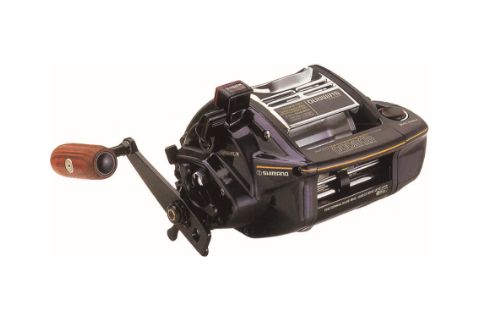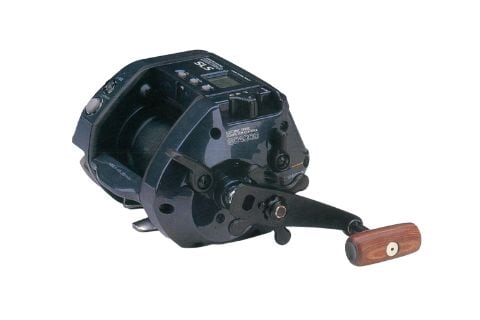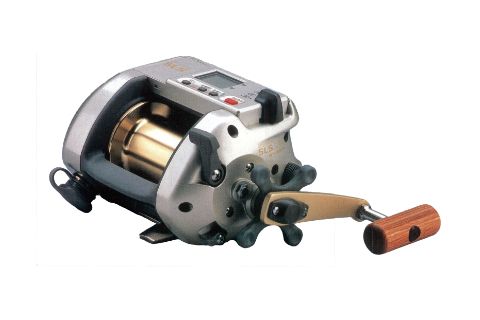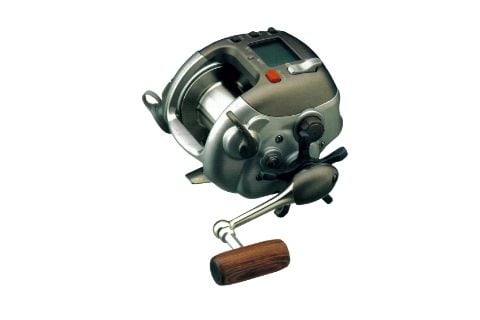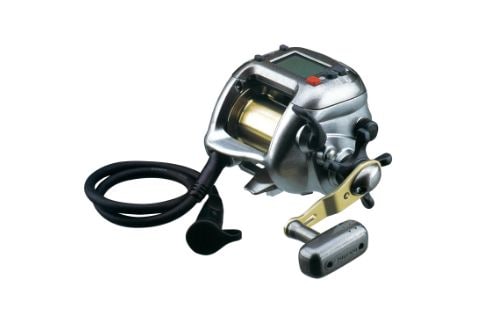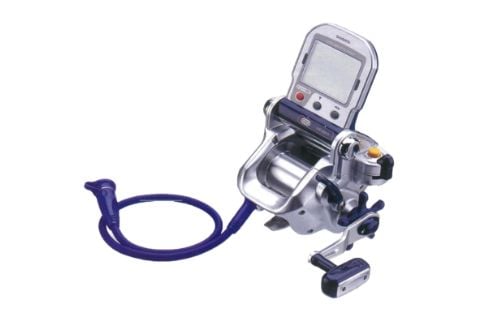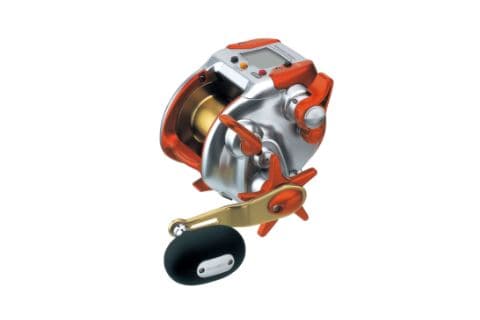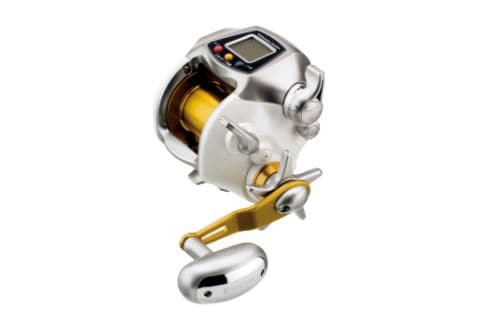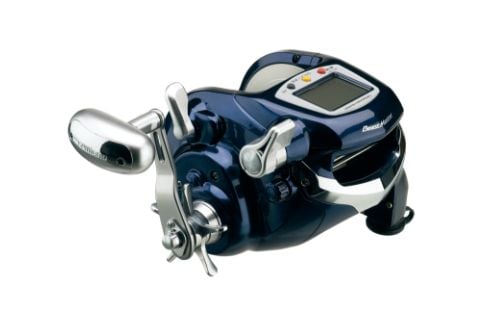STORY
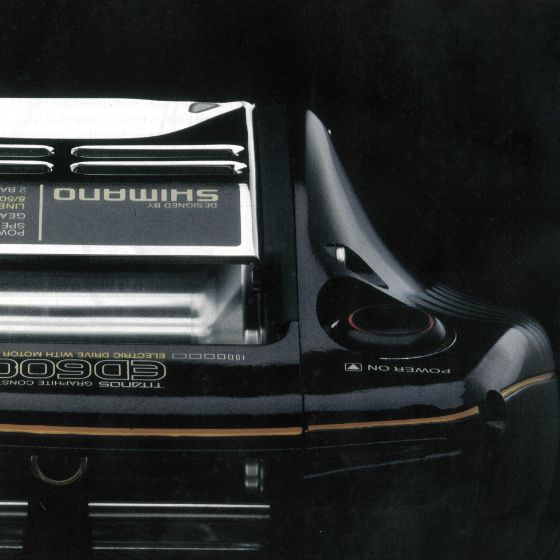
Product development from a user-first viewpoint
Going offshore by boat increases the target fish species and offers more opportunities to catch big fish. However, it is difficult for beginners to accurately set the hook rig at the intended water depth and achieve a large catch. Even for experienced anglers, it required considerable physical strength to wind a line from deep water. To cope with these issues, Shimano embarked on a project in the 1980s to develop a reel by using electric and electronic technologies. In 1987, it released TITANOS Dendou-Maru ED 6000, Shimano’s first electric reel. The product helped add the power required for boat fishing and bottom fishing. It also featured a compact design while focusing on operability. The birth of Dendou-Maru expanded the roles of reels and heralded the future of electric reels. Dendou-Maru was a forerunner of the digitization of Shimano’s fishing tackle. While improving power and operability and enhancing usability through reduction in weight and size, the Dendou-Maru also reflected creative ideas to allow anglers to experience the joy of fishing. For example, the manual winding function was provided, without digitalizing the entire functions, to enable anglers to enjoy interacting with the fish they caught (i.e., the joy of fishing). When a big fish was on the hook rig, anglers could manually assist the electric winding. Dendou-Maru expanded the potential for enjoying fishing, instead of focusing solely on convenience, by taking into account all potential situations in fishing.
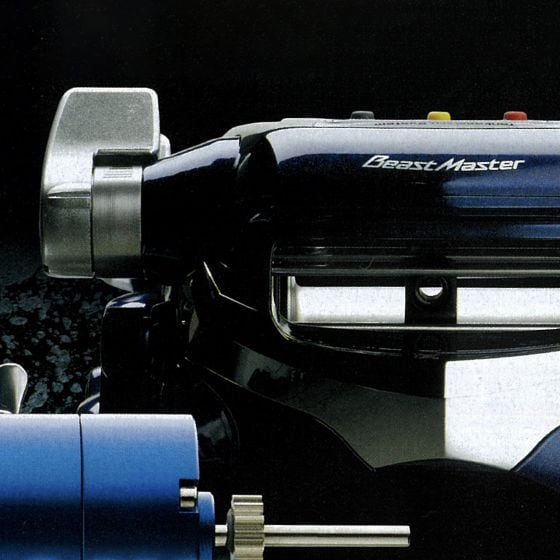
Successive Models That Continued to Evolve for Users Through Shimano’s Challenges
The lightweight and robust Titanos body of TITANOS Dendou-Maru ED 6000, which was released in 1987, featured the proprietary cutting-edge functions of Shimano, which was the pioneer of reel evolution. It was equipped with a function to automatically set the hook rig at the intended water depth. It became the first product to feature the full-fledged function to automatically wind a line using a motor by operating a switch, which is the norm today. Subsequently, Shimano worked on the development of a function to accurately set the hook rig at the intended water depth. In 1990, it developed the Shimano Line Program System (SLS), which memorized the number of spool rotations and the line length when winding a line on a reel in advance to calculate the water depth. The products released in 1990 and 1994 featured the Technique Master, which was designed to automatically perform the luring action, and the right depth announcement system, whose calibration accuracy was further improved, respectively. Shimano also worked to enhance functionality. In 2001, an easy fishing mode was introduced. It automatically adjusted the motor winding speed depending on the fish’s movement to prevent the fish from coming off the hook. The another-model released in the same year featured a large movable LCD.
With the advent of the PE line, Shimano made efforts to further increase the power of its electric reels. In 2010, the GIGAMAX MOTOR, a brushless motor, was used for the flagship Dendou-Maru 9000 BeastMaster ZB model. It should be noted that brushless motors are also used in racing cars and Shinkansen bullet trains. The motor achieved high durability and overwhelming power and speed, which were required of electric reels. It was also designed to endure severe control operation. In 2012, the Dendou-Maru series was subdivided into the BeastMaster, ForceMaster, PLAYS, and PLEMIO series, which continue to evolve to this day.
With the advent of the PE line, Shimano made efforts to further increase the power of its electric reels. In 2010, the GIGAMAX MOTOR, a brushless motor, was used for the flagship Dendou-Maru 9000 BeastMaster ZB model. It should be noted that brushless motors are also used in racing cars and Shinkansen bullet trains. The motor achieved high durability and overwhelming power and speed, which were required of electric reels. It was also designed to endure severe control operation. In 2012, the Dendou-Maru series was subdivided into the BeastMaster, ForceMaster, PLAYS, and PLEMIO series, which continue to evolve to this day.



